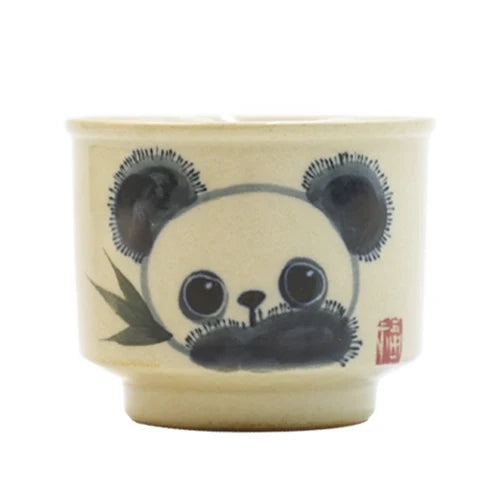Если вас интересует листовой чай, возможно, вам будет интересно узнать больше о Да Хун Пао — знаменитом китайском чае.
Da Hong Pao производится в горах Уи провинции Фуцзянь и относится к категории улун, а именно к типу чая из камней Уи. Листья чая Да Хун Пао плотно скручены, имеют зеленовато-коричневый цвет с белыми кончиками. При заваривании чайный настой приобретает золотисто-желтый оттенок и обладает насыщенным цветочным и фруктовым ароматом. Da Hong Pao имеет мягкий и стойкий вкус, отличающийся уникальным каменным шармом, характерным для чаев Уи.
Да Хун Пао — это черный чай?

Листовой черный чай полностью ферментирован, тогда как Да Хун Пао относится к полуферментированной категории листового улуна . Название «Да Хун Пао» не означает, что это черный чай, просто потому что оно содержит иероглиф «хун» (красный). Это похоже на то, как белый чай Аньцзи на самом деле не является белым чаем. Кроме того, основной технологией производства Да Хун Пао является процесс «качающейся зелени», уникальный метод, характерный для производства чая улун. Из-за этого процесса заваренные листья чая улун могут демонстрировать феномен, когда зеленые листья окаймлены красными краями.
Какова связь между Да Хун Пао и чаем Уишань?
«Чай из скалы Уи» относится к улунскому чаю, произведенному в уникальных природных и экологических условиях горы Уи. Он включает в себя выбор подходящих сортов чайного дерева, бесполое размножение, выращивание и традиционные методы обработки для создания улуна с отличительными характеристиками очарования скалы (аромат каменной косточки и цветов).
Da Hong Pao, провозглашенный «Чайным королем Уишаньского утеса», является наиболее представительным продуктом среди чаев Уишаньского утеса. Он служит как названием чайного продукта, так и сорта чайного дерева.
Почему Да Хун Пао имеет дымный привкус?
Обжарка является важнейшим этапом в процессе преобразования чайных листьев Да Хун Пао. Когда дело доходит до обжарки, она требует высокого уровня технических знаний. В зависимости от интенсивности обжарки ее можно классифицировать на различные уровни. Различные уровни обжарки приводят к заметным различиям в аромате чая, типе листа, цвете чайного настоя и пригодности для различных предпочтений.
Дымный привкус в Да Хун Пао появляется из-за процесса обжарки. Если степень обжарки высокая и продолжительность длительная, дымный аромат, как правило, более выражен.
Почему на рынке наблюдается значительная разница в цене на Да Хун Пао?

Da Hong Pao, продаваемый на рынке, в основном подразделяется на чистый Da Hong Pao и смешанный Da Hong Pao. Чистый Da Hong Pao получается путем бесполого размножения материнского дерева Da Hong Pao и обрабатывается индивидуально. Из-за ограниченного и редкого производства чистый Da Hong Pao стоит дороже и считается одним из лучших листовых чаев .
С другой стороны, смешанный Да Хун Пао более распространен и создается путем смешивания различных сортов чая Wuyi rock из региона горы Уи в определенных пропорциях в соответствии с требованиями рынка. Этот процесс смешивания направлен на улучшение аромата и вкуса в определенной степени. Поскольку сырье более доступно, смешанный Да Хун Пао, как правило, более доступен. Кроме того, цены могут значительно различаться в зависимости от разных регионов и сортов Да Хун Пао.
Может ли купажированный Да Хун Пао иметь хорошее качество?

Смешивание чая похоже на методы смешивания, используемые в производстве вин – оба являются важными процессами для обеспечения стабильного качества при улучшении общих характеристик чая. С тех пор как чай стал товаром, методы смешивания стали применяться из-за уникальной и разнообразной природы процесса производства чая.
Разнообразное происхождение свежих чайных листьев, различия во времени сбора урожая и различия в методах обработки, включая обжарку, могут потенциально влиять на конечное качество чая. Даже в пределах одной чайной фабрики партии произведенного чая могут отличаться по качеству. Рыночные стандарты качества чая, такие как специальный сорт, первый сорт, второй сорт и т. д., требуют разумного смешивания, чтобы гарантировать, что конечный продукт соответствует этим стандартам. Искусство смешивания требует высокого уровня технических знаний. Поэтому вопрос заключается не в том, является ли смешивание хорошим или плохим; скорее, определяющим фактором является качество самого процесса смешивания.
Можно ли купить хороший Да Хун Пао в Уишане?
Хотя Да Хун Пао родом из Уишаня, это не гарантирует, что вы сможете найти хороший Да Хун Пао в этом месте.
Возможность купить хороший чай на месте полностью зависит от вашей способности оценивать чай при выборе. Если вы собираетесь купить чай в Уишане, но не обладаете знаниями, чтобы оценить качество чая, все равно есть вероятность не приобрести желаемого качества.
Почему Дахунпао, поданное в чайной лавке, кажется вкуснее?

Одним из интересных свойств листового чая является его способность завариваться многократно, при этом на вкус чая влияют различные факторы и создается множество его изменений.
Распространенное мнение, что заваренный дома Да Хун Пао не такой вкусный, как в чайных магазинах, в первую очередь обусловлено различиями в методах заваривания. Вкус чая определяется не только самими чайными листьями, но и в значительной степени зависит от инструментов, используемых для заваривания, качества воды и особенно таких факторов, как время заваривания, количество воды и температура воды.
Сотрудники чайных магазинов проходят профессиональную подготовку, обучаясь тому, как заваривать чай, чтобы раскрыть его лучшие качества. В принципе, чай, который они заваривают, будет иметь лучший вкус. Для любителей чая достаточно следовать инструкциям по завариванию на упаковке или корректировать процесс в зависимости от личных предпочтений. Освоить эти приемы несложно, и крайне важно не игнорировать полностью важность приемов заваривания или намеренно не усложнять их, поскольку наслаждение чаем должно быть приятным опытом.
Как долго можно хранить Да Хун Пао?
Условия окружающей среды, включая влажность, температуру, кислород и свет, могут влиять на качество листового чая . При хранении Да Хун Пао обычно рекомендуется выбирать место, защищенное от света, влагостойкое, хорошо проветриваемое и свободное от запахов. Также важно не допускать контакта чайных листьев с воздухом и влагой.
Срок годности Da Hong Pao обычно составляет около 3 лет (но при правильном хранении его можно употреблять и дольше). В зависимости от степени обжарки могут быть различия в условиях хранения. Da Hong Pao с более низким уровнем обжарки менее пригоден для хранения, поскольку его аромат имеет тенденцию быстро рассеиваться. С другой стороны, Da Hong Pao с более высоким уровнем обжарки относительно более устойчив к хранению. Часто рекомендуется дать ему отдохнуть некоторое время после обжарки, чтобы дымный привкус утих, в результате чего получается более исключительный вкус и аромат.
Надеюсь, эти ответы помогут вам лучше понять Да Хун Пао , что позволит вам оценить историческое прошлое и восхитительные вкусы этого знаменитого китайского чая.







































































